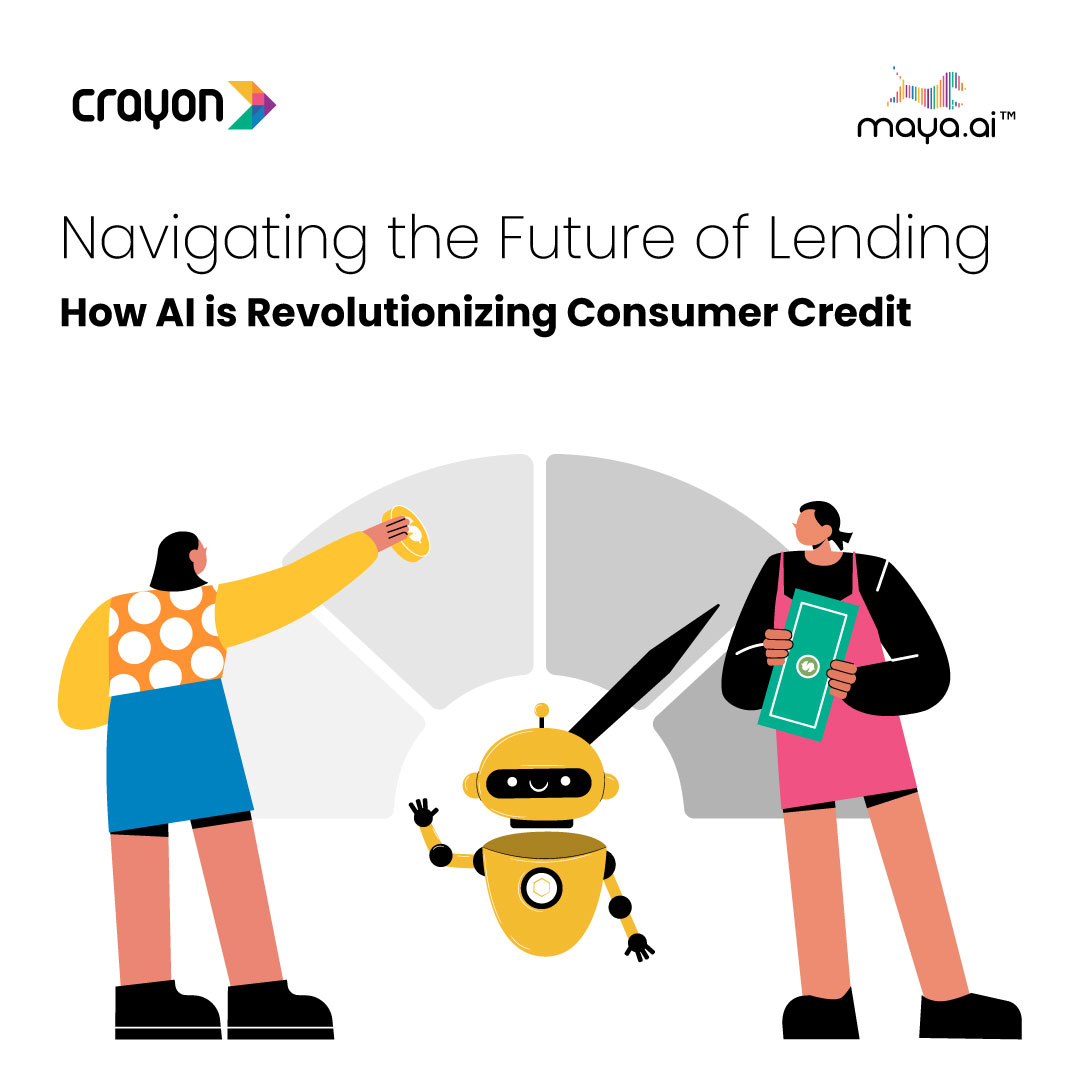
Unawareness
November 30, 2023
Fintech and payments trends to watch out for in 2024
December 14, 2023The Crayon Blog
Unlocking the Personalization Promise: What Banks Must Deliver
| Published December 1, 2023 | The Crayon Team
In today’s world, where every customer interaction is a potential goldmine, banks are scrambling to deliver personalized experiences that set them apart from the competition. But what does personalization really mean in the context of banking? It’s about understanding each customer’s unique needs, preferences, and financial goals, and then tailoring products, services, and communications accordingly.
Traditionally, banks have relied on generic marketing campaigns and one-size-fits-all products to cater to their customers. However, this approach is no longer effective. Customers are now accustomed to receiving personalized recommendations from retailers, streaming services, and even social media platforms. They expect the same level of personalization from their banks.
This is where Artificial Intelligence (AI) comes in. AI can help banks collect, analyze, and understand vast amounts of customer data, allowing them to create truly personalized experiences. Here are a few ways AI can be used.
Traditionally, banks have relied on generic marketing campaigns and one-size-fits-all products to cater to their customers. However, this approach is no longer effective. Customers are now accustomed to receiving personalized recommendations from retailers, streaming services, and even social media platforms. They expect the same level of personalization from their banks.
This is where Artificial Intelligence (AI) comes in. AI can help banks collect, analyze, and understand vast amounts of customer data, allowing them to create truly personalized experiences. Here are a few ways AI can be used.
Analyze transaction history to identify spending patterns and predict future need:
To fulfill the personalization promise, banks must first understand the diverse and evolving needs of their customers. This requires collecting and analyzing data on customer behavior, preferences, and financial goals. Advanced analytics and artificial intelligence play a crucial role in deciphering patterns and trends, allowing banks to create a comprehensive view of each customer.
By harnessing the power of data analytics, banks can anticipate customer needs, identify potential pain points, and tailor their services accordingly. For example, if a customer is regularly saving for a specific goal, such as buying a house or funding education, the bank can offer targeted advice, savings plans, or investment options that align with those goals.
By harnessing the power of data analytics, banks can anticipate customer needs, identify potential pain points, and tailor their services accordingly. For example, if a customer is regularly saving for a specific goal, such as buying a house or funding education, the bank can offer targeted advice, savings plans, or investment options that align with those goals.
Understand customer demographics to tailor product recommendations and marketing messages:
One of the fundamental aspects of delivering on the personalization promise is offering customized financial products. Traditional one-size-fits-all approaches are becoming obsolete as customers seek personalized solutions that cater to their unique circumstances. Whether it’s personalized loan terms, credit card features, or investment portfolios, banks need to provide options that align with individual preferences and financial situations.
Utilizing technology, such as machine learning algorithms, can help banks recommend the most suitable financial products based on a customer’s spending habits, income, and financial goals. By tailoring the features of loans, credit cards, and other financial products, banks can enhance the overall customer experience and build trust.
Utilizing technology, such as machine learning algorithms, can help banks recommend the most suitable financial products based on a customer’s spending habits, income, and financial goals. By tailoring the features of loans, credit cards, and other financial products, banks can enhance the overall customer experience and build trust.
Create seamless digital experiences:
As digital banking becomes the norm, providing a seamless online experience is crucial for delivering on the personalization promise. Banks should invest in user-friendly interfaces, intuitive mobile apps, and responsive websites that make it easy for customers to manage their finances effortlessly. Additionally, incorporating features like chatbots or virtual assistants powered by artificial intelligence can enhance the customer experience by providing instant, personalized support.
Moreover, the personalization of digital experiences goes beyond the transactional. Banks can use customer data to personalize marketing communications, delivering targeted promotions and educational content that align with each customer’s financial journey.
Moreover, the personalization of digital experiences goes beyond the transactional. Banks can use customer data to personalize marketing communications, delivering targeted promotions and educational content that align with each customer’s financial journey.
Monitor online behavior to identify potential financial risks and provide timely interventions:
While personalization relies on the effective use of customer data, banks must prioritize data security and privacy. Customers are increasingly concerned about the protection of their personal and financial information, and any breach of trust can be detrimental to a bank’s reputation.
To address these concerns, banks need to implement robust security measures, comply with data protection regulations, and communicate transparently about their data usage policies. Building trust with customers is essential for fostering long-term relationships and ensuring that customers feel comfortable sharing the necessary information for a personalized banking experience.
To address these concerns, banks need to implement robust security measures, comply with data protection regulations, and communicate transparently about their data usage policies. Building trust with customers is essential for fostering long-term relationships and ensuring that customers feel comfortable sharing the necessary information for a personalized banking experience.
Communication and feedback:
The personalization journey doesn’t end with the initial customization of services; it requires continuous engagement and feedback loops. Banks should proactively communicate with customers, seeking input on their experiences and preferences. Surveys, feedback forms, and regular check-ins can provide valuable insights into how well the personalized services are meeting customer expectations.
By staying attuned to customer feedback, banks can adapt their offerings in real-time, ensuring that personalization efforts remain relevant and effective. Additionally, providing customers with the ability to adjust their preferences and settings empowers them to have greater control over their banking experience.
By staying attuned to customer feedback, banks can adapt their offerings in real-time, ensuring that personalization efforts remain relevant and effective. Additionally, providing customers with the ability to adjust their preferences and settings empowers them to have greater control over their banking experience.
AI-powered personalization can benefit banks in several ways:
- Improved customer satisfaction: Customers appreciate feeling like their banks understand them and are looking out for their best interests.
- Increased revenue: Personalized recommendations can lead to cross-selling and upselling opportunities.
- Reduced churn: Customers are less likely to switch to a competitor if they feel like their current bank is providing them with a personalized experience.
Here are some specific examples of how AI is being used to personalize the banking experience:
- Virtual financial assistants: AI-powered chatbots can provide customers with personalized advice and support 24/7.
- Automated savings and budgeting tools: AI can analyze spending patterns and suggest personalized savings goals and budgeting strategies.
- Personalized investment recommendations: AI can analyze risk tolerance and investment goals to recommend personalized investment portfolios.
While AI holds immense promise for personalization, it’s important to remember that it’s not a magic bullet. Banks need to implement AI responsibly and ethically, ensuring that customer data is protected and used in a transparent manner.
The future of banking is personalization. Banks that embrace AI and create truly personalized experiences will be well-positioned to thrive in the years to come. So, if you’re a bank looking to stay ahead of the curve, start thinking about how AI can help you deliver on the ‘personalization promise’.
The future of banking is personalization. Banks that embrace AI and create truly personalized experiences will be well-positioned to thrive in the years to come. So, if you’re a bank looking to stay ahead of the curve, start thinking about how AI can help you deliver on the ‘personalization promise’.
Recent Blogs
Subscribe to the Crayon Blog. Get the latest posts in your inbox!





